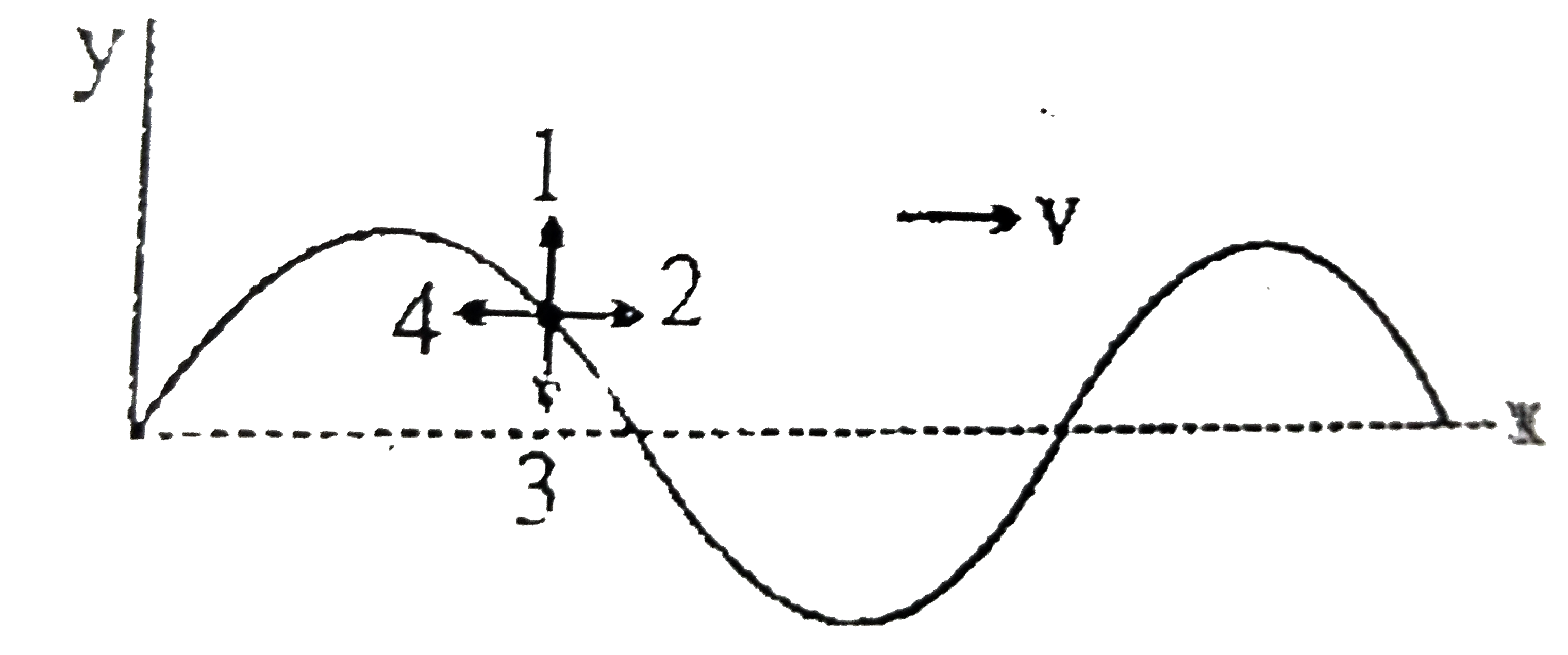The equation of a wave travelling on a stretched string along the x-axis is y=ae−(bx+ct). The direction of propagation of wave is
along negative y-axis
along positive y-axis
along negative x-axis
along positive x-axis
The correct Answer is:C
To determine the direction of propagation of the wave described by the equation y=ae−(bx+ct), we can follow these steps:
Step 1: Identify the form of the wave equation
The given wave equation is y=ae−(bx+ct). We need to rewrite this equation in a standard wave form to analyze the direction of propagation.
Step 2: Rewrite the exponent
The exponent in the wave equation is −(bx+ct). We can rewrite this as:
y=ae−(bx+ct)=ae−bxe−ct
This shows that the wave is a function of both x and t.
Step 3: Compare with standard wave forms
In wave motion, the standard forms of wave equations are typically expressed as:
- y=Ae−(kx−ωt) for waves traveling in the positive x-direction.
- y=Ae−(kx+ωt) for waves traveling in the negative x-direction.
Step 4: Analyze the signs
In our case, we have:
−(bx+ct)=−bx−ct
This can be interpreted as:
−(bx+ct)=−bx−ct
Here, we can see that the terms involving x and t have the same sign (both negative).
Step 5: Determine the direction of propagation
Since both x and t have negative signs, this indicates that the wave is traveling in the negative x-direction.
Conclusion
Thus, the direction of propagation of the wave is in the negative x-direction.
The given wave equation is y=ae−(bx+ct). We need to rewrite this equation in a standard wave form to analyze the direction of propagation.
The exponent in the wave equation is −(bx+ct). We can rewrite this as:
y=ae−(bx+ct)=ae−bxe−ct
This shows that the wave is a function of both x and t.
In wave motion, the standard forms of wave equations are typically expressed as:
- y=Ae−(kx−ωt) for waves traveling in the positive x-direction.
- y=Ae−(kx+ωt) for waves traveling in the negative x-direction.
In our case, we have:
−(bx+ct)=−bx−ct
This can be interpreted as:
−(bx+ct)=−bx−ct
Here, we can see that the terms involving x and t have the same sign (both negative).
Since both x and t have negative signs, this indicates that the wave is traveling in the negative x-direction.
Thus, the direction of propagation of the wave is in the negative x-direction.
Topper's Solved these Questions
Similar Questions
Equation of travelling wave on string
View SolutionThe equation of a wve travelling on a string stretched along the X-axis is given by
y=Ad−(xatT)2
a. Write the dimensions of A, a and T. b. Find the wave speed. c.In which direction is the wave travelling? d.Where is the maximum of the pulse located at t=T?Att=2T?
View Solution
Knowledge Check
The equation of a wave travelling on a string is d
A64cms−1 in +X-directionB32cms−1 in -X-directionC32cms−1 in +X-directionD64cms−1 in -X-directionIf a wave is propagated along the stretched string in the form
ALongitudinal waveBElectromagnetic waveCTransverse waveDAll of the aboveThe equation of a wave travelling on a stretched string is y = 4 sin 2π(t0.02−x100)
Here, x and y are in cm and t is in second. The speed of wave isA50 m/sB40 m/sC50 cm/sD40 cm/s
The equation of a wave travelling on a string stretched along the X-axis is given by
y=Ae(−xa+tT)2
(a) Write the dimensions of A, a and T.
(b) Find the wave speed.
(c) In which direction is the wave travelling?
(d) Where is the maximum of the pulse located at t=T and at t=2T?
View SolutionStationary waves
View SolutionThe equation of a plane wave travelling along positive direction of x−axis is y=asin2πλ(vt−x) When the wave is reflected at a rigid surface and its amplitude becomes 80%, then find the equation of the reflected wave.
View SolutionThe speed of a transverse wave (v) along a stretched string is given by
View SolutionA sinusoidal transverse progressive wave travelling on stretched string along x axis Choose appropriate number for direction of velocity and acceleration respectively force particle P shown in the diagram.

View Solution
